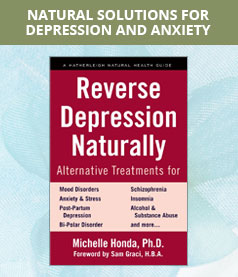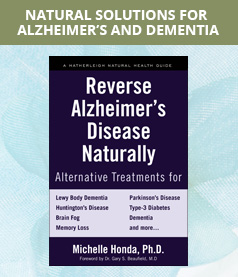
A growing consensus of whether a patient should have had a mastectomy or not is on the rise – more to the point – “Did I really need to have that surgery performed?” Sadly, looking back on their past events, many women are expressing the view that the mastectomy surgery was unnecessary. It is not uncommon for a patient to be told to have such a procedure for preventive measures. Also, whether or not to have a biopsy performed, especially when several previous procedures have shown the mass to be benign – recommendations for futher procedures are routinely recommended eventhough other risks stem from the induction of these operations.
Dr. Esserman is one such doctor who does not advocate to having all small lumps and bumps biopsied. Upon scrutinizing the patients x-ray film, she, unlike many of her colleagues, does not uphold to unduly stressing the patient by performing a biopsy on very small masses that she does not deem as necessarily being cancerous. She has discovered that the anxiety to the patient or unnecessary surgery, is not always warranted or in the patients best interest. The following dialogue presented by Jim Wilson/The New York Times and Katie Hafner does not fall under the realm of holistic medicine involving alternative treatment, but it does show a more welcomed approach and protocol for any women visiting the doctor’s office with a lump in her breast.
A Breast Cancer Surgeon Who Keeps Challenging the Status Quo
Sept. 28, 2015
Dr. Esserman before performing a surgery in July, holding a sheet of song lyrics. Her preparation often includes singing to her patients as they go under anesthesia. She takes requests. Credit Jim Wilson/The New York Times
Profiles in Science
By KATIE HAFNER
Late one afternoon this summer, Dr. Laura J. Esserman, a breast cancer surgeon at the University of California, San Francisco, sat in a darkened room scrutinizing a breast M.R.I. With a clutch of other clinicians at her side, she quickly homed in on a spot smaller than a pencil eraser.
She heard the words “six-millimeter mass.” Her response was swift: “No.” Meaning no biopsy.
Most doctors, including the radiologist seated next to her, would have said yes. But Dr. Esserman, who has dedicated much of her professional life to trying to get the medical establishment to think differently about breast cancer, foresaw only unnecessary anxiety for the patient, who had had several biopsies in the past — all benign
Is Raised Over Value of Surgery for Breast Lesion at Earliest Stage AUGgs AUG. 20, 2015
Breast BBreast Cancer Treatment and D.C.I.S.: Answers to Questions About New FindinDoubt iopsies Leave Room for Doubt, Study Finds MARCH 17, 2015
Picture Your Life: Faces of Breast Cancer
Our Feel-Good War on Breast Cancer APRIL 25, 2013
Well: Scientists Seek Value to Rein In Diagnoses of Cancer JULY 29, 2013
Mammograms’ in Cancer Fight at Issue SEPT. 22, 2010
Dr. Esserman, 58, is one of the most vocal proponents of the idea that breast cancer screening brings with it over diagnosis and over treatment. Her philosophy is controversial, to say the least. For decades, the specter of women dying for lack of intervention has made aggressive treatment a given.
Tissue from a patient with ductal carcinoma in situ. Credit Garry DeLong/Science Source
But last month, her approach was given a boost by a long-term study published in the journal JAMA Oncology. The analysis of 20 years of patient data made the case for a less aggressive approach to treating a condition known as ductal carcinoma in situ, or D.C.I.S., for which the current practice is nearly always surgery, and often radiation. The results suggest that the form of treatment may make no difference in outcomes.
Dr. Esserman, who directs the Carol Franc Buck Breast Care Center, is one of only a few surgeons in the United States willing to put women with D.C.I.S. on active surveillance instead of performing biopsies, lumpectomies or mastectomies. She and other critics of vigorous intervention point to the potential side effects and risks of sometimes disfiguring treatments for premalignant conditions that are unlikely to develop into life-threatening cancers.
She has also challenged the conventional wisdom surrounding screening, arguing that while mortality from breast cancer has decreased over the past three decades, the approach to screening needs to change. She points out that the most lethal breast cancers appear between screens, while mammograms are finding more slow-growing cancers with a very low chance of metastasis. In addition, screening has revealed a reservoir of D.C.I.S., also known as Stage 0, which now accounts for 20 percent to 25 percent of all breast cancer diagnoses.
So convinced is Dr. Esserman that most patients will not benefit from early detection of such lesions that she has recommended to the National Cancer Institute that for many D.C.I.S. lesions, the ominous word “carcinoma” be dropped from the medical term for them and that they be renamed “indolent lesions of epithelial origin,” or IDLEs.
Much of this unsettles cancer specialists, who believe that aggressive treatment is prudent given that D.C.I.S. can be a precursor to invasive cancer in some patients.
“What do you do if you hear a gunshot — duck or not?” asked Dr. Larry Norton, medical director of the Memorial Sloan Kettering Evelyn H. Lauder Breast Center, who nonetheless said he admired Dr. Esserman’s professionalism and rigor.
In an era of 15-minute doctor visits, Dr. Esserman is known to spend hours with a patient (a practice that can be maddening to those in the waiting room) even if it means staying at the office until 10 p.m. She sends late-night text messages to patients and calls whenever she can.
One recent Sunday afternoon, she stood in the large, art-filled kitchen of her house in the Ashbury Heights district of San Francisco, rehearsing the song “Defying Gravity” from the musical “Wicked.” It was a request from a patient.
For nearly two decades, Dr. Esserman has sung to her patients as they go under anesthesia. With enough notice, she takes requests.
“Ask for an aria and I might need a week, but most songs take about 15 minutes to learn,” she said.
“Unlimited. My future is unli-mi-ted,” she sang full-throated in her kitchen, for a visitor.
Then she stopped. “You see, that’s the thing,” she said, her gaze intense enough to double as a Vulcan mind meld. “You have to believe in the possible. The minute you think your future is limited, it is.”
Slow to Gain Acceptance
Dr. Esserman received national attention five years ago with an innovative, adaptively randomized drug trial called I-SPY 2, aimed at reducing the cost and time required to test new medications for breast cancer. The trial matches drugs with patient subtypes, allowing drugs from different companies to be assessed simultaneously, and much earlier in the disease process, while quickly phasing out those that do not appear to be working.
By JIM WILSON and ROBIN LINDSAY00:23A Singing Surgeon
Copyright © 2015 – All Rights Reserved – Michelle Honda Ph.D.
Disclaimer
While close attention was given to the accuracy of information in this article, the author accepts neither responsibility nor liability to any person with respect to injury, damage, loss or any circumstances involving alleged causes directly or indirectly related to the information in this article. The sole purpose is to educate and broaden ones awareness. This information is not meant to replace medical advice or services provided by a health care professional.













Follow Us!